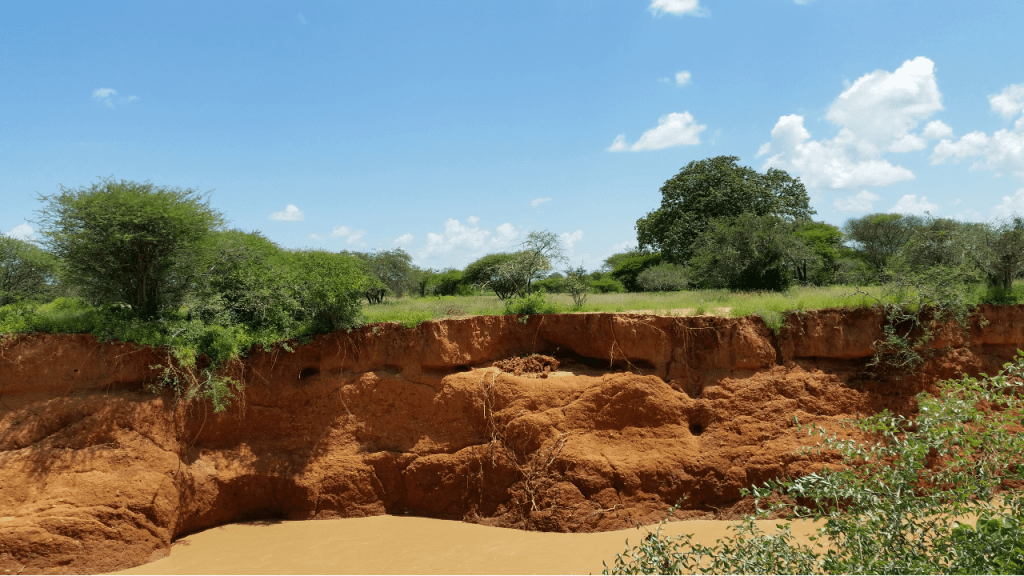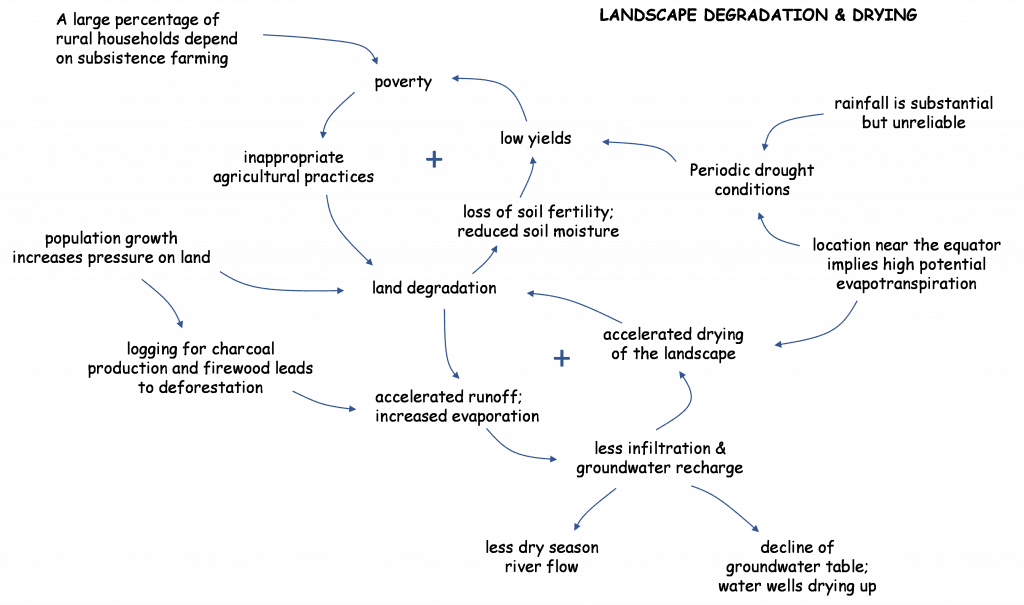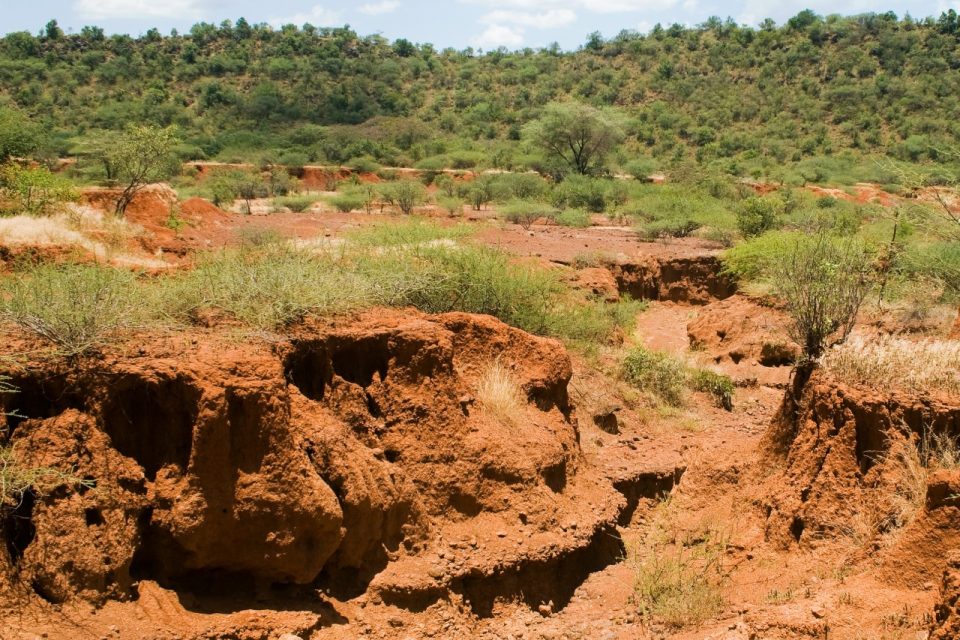The key role of biological processes in landscape formation and maintenance is (still) not always properly acknowledged.
The importance of geological and climatological factors in landscape formation is clear to most people. Yet vegetation plays a principal role in building and conserving soil, slowing down runoff so that the eroding energy of flowing water is dissipated, banking rainwater, and creating moderated micro-climates that build fertility and support more vegetation.
To paraphrase Peter Hazell of The Mulloon Institute: a functioning landscape will recycle rainwater in a diurnal cycle that builds vegetation & fertility & landscapes—herewith dissipating incoming solar energy. It leads to a cooler landscape during the day, and a warmer one during the night. The importance of this climate regulation function—which serves to manage and dissipate the constant influx of solar radiation—extends beyond local scales and could assist in arresting global warming.
Landscape degradation revokes these functions.
Landscape dehydration—an attendant consequence of landscape degradation—is generally caused by a combination of environmental degradation and inappropriate agricultural practices. Climate change is usually blamed but is generally not the root cause.
Removal of vegetation amplifies the rainfall-runoff response and increases the sediment transport capacity of a stream. Where there is adequate slope, the channel will erode. Floodwaters concentrate in the incised channel and stop inundating the adjacent lands. Groundwater and soil moisture are no longer replenished, and fertile sediments no longer deposited. In addition, incised channels lower the groundwater table and progressively dry-out the productive alluvial valleys. Flood peaks increase while baseflow is down, and some streams may even completely dry-out in the dry-season. The falling groundwater table will start damaging riparian forests and reduce the productive use of the valley. The processes described above take place at all scales. Once taken off, they typically accelerate.

Landscape dehydration is not confined to arid and semi-arid landscapes. It has also become a regular feature in the sub-humid tropics—which receive rainfall over 1000 mm/year.
Measures to promote landscape rehydration are well known and proven. Most are simple, low costs, small scale, and can be implemented incrementally. Measures include swales, check dams, leaky weirs, micro reservoirs, small-scale water harvesting structures, etc. But the importance of biological measures should be emphasized.
Living processes— when not over-exploited—are regenerative, self-sustained, and do their work free of charge. In fact, they carry multiple additional benefits. For instance, cover crops in no-till agriculture slow down runoff and promote infiltration of rainfall—all good. But they also enhance nutrient and moisture availability, prevent soil erosion, assist in pest control, store carbon, and can even be grazed. And they are maintenance free.
There are countless other examples.
Effective landscape rehydration is best implemented by restoring vegetation in combination with small-scale physical infrastructure. In turn, the durability of small-scale physical infrastructure can increase exponentially when combined with vegetation. It results in a living, growing, and self-sustained structure with multiple benefits for water quality, sediment retention, providing habitats, and slowing down the rainfall-runoff response.
(with thanks to “Time to get planting”; the Mulloon Institute; 10 Dec 2020)
A typical landscape dehydration process is presented in the below causal diagram. Note that the diagram for a pastoralist-dominated farming system is slightly different.

Causal Diagrams
Increasing the understanding of a complex system requires a systematic approach. Causal diagrams have proven effective in conceptualizing and visualizing the cause-effect structure of a complex problem. The diagrams enable communication of the system dynamics to a larger audience. They also help to identify and analyze intervention options.
A causal diagram usually includes several critical assumptions. They need to be clearly communicated and will require verification.
